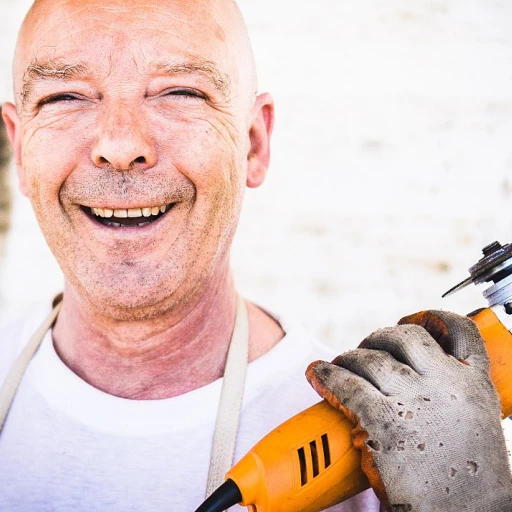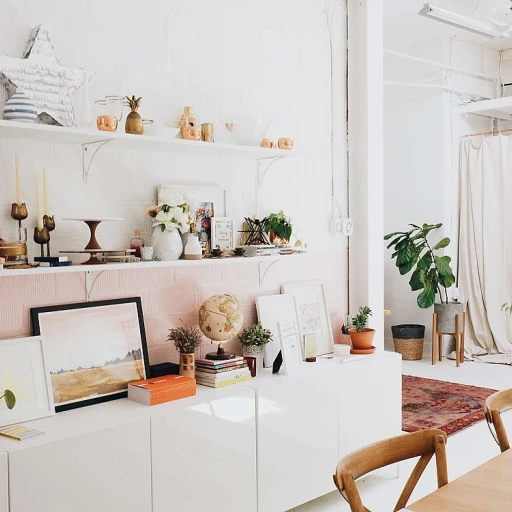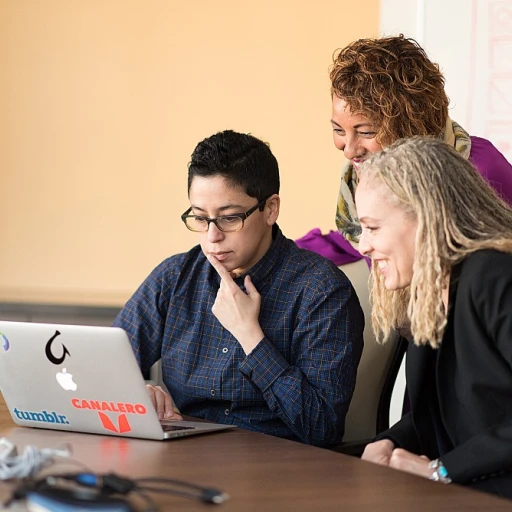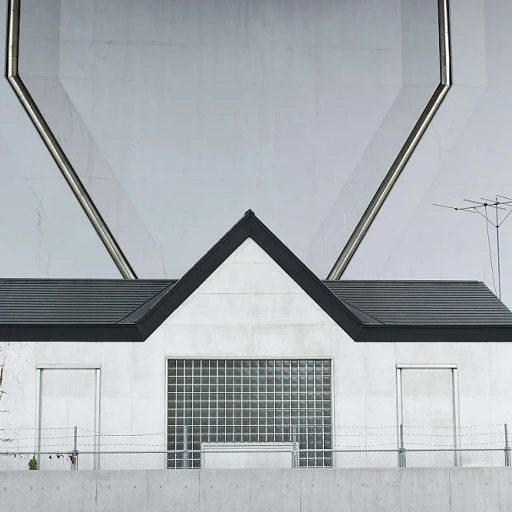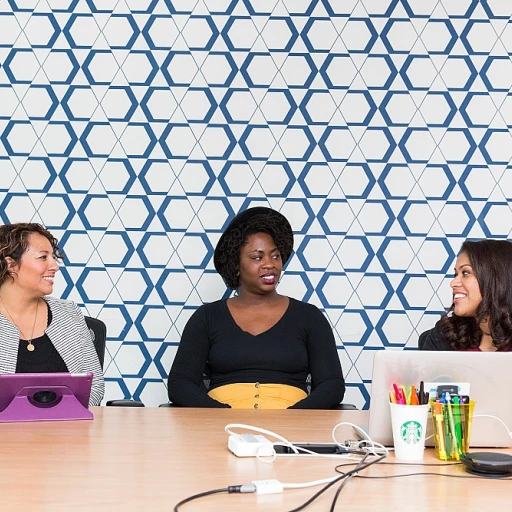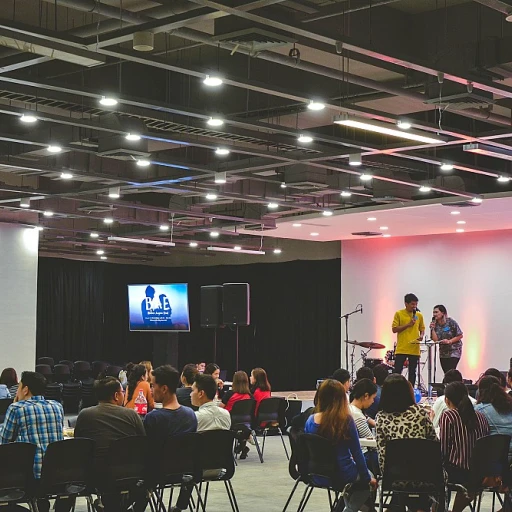
Understanding Creative Turnover
Decoding the Dynamics of Creative Turnover
Creative turnover is a phenomenon that can significantly impact the vitality of a design agency. Whether you're part of a team creatif in Paris or a digital agency in Sao Paulo, understanding this dynamic is crucial. It refers to the rate at which creative professionals leave a company and are replaced by new talent. This turnover can be both a challenge and an opportunity for brands and companies alike.
In the fast-paced world of design, where brand identity and packaging design are constantly evolving, maintaining a stable creatif group is essential. The turnover rate can affect not only the internal dynamics of a group team but also the relationship with clients. For instance, a high turnover might disrupt ongoing projects, leading to inconsistencies in brand strategy and execution.
However, it's not all negative. Creative turnover can also bring fresh perspectives and innovative ideas to the table. This is particularly relevant in regions like Asia Pacific and Brazil, where the design landscape is rapidly changing. The challenge lies in balancing these new insights with the stability needed to maintain a cohesive brand identity.
For those interested in exploring how turnover affects innovation, the inclusive user experience design offers insights into how fresh perspectives can revolutionize accessibility and creativity in the digital space.
Causes of Creative Turnover
Spotting the Underlying Factors
The creative industry is a dynamic and vibrant field driven by design and innovation. Yet, it faces a critical challenge: creative turnover. This phenomenon is often prompted by a myriad of factors that influence the work environment and employee retention. Let's delve into these underlying causes to better understand the complexity of this issue.
Firstly, the rapid pace of technology in design, coupled with the surge of artificial intelligence and digital creation, puts immense pressure on creative professionals to continuously update their skills. They often feel the burden of keeping up with latest trends and advancements, which can lead to burnout.
Secondly, insufficient opportunities for creative expression can cause talented individuals to seek out environments where their innovative ideas are truly valued. It is crucial that companies cultivate a culture of innovation, allowing employees the freedom to explore and implement novel ideas.
Moreover, the lack of recognition and inadequate compensation are significant contributors to dissatisfaction. When designers feel their contributions go unnoticed or unrewarded, it can lead to disengagement, prompting them to explore better prospects elsewhere.
Lastly, inflexible work environments that do not accommodate personal and professional growth can drive creative professionals away. Employees increasingly desire workplaces that offer work-life balance, professional development, and a sense of purpose.
Understanding these driving factors is crucial for devising effective strategies that will retain talent and maintain a thriving creative ecosystem, as discussed further in other sections of this article.
Impact on Innovation
Innovative Challenges Triggered by Creative Turnover
Creative turnover can significantly hamper an organization’s ability to innovate. When talent flows in and out frequently, the continuity of thought and the flow of ideas inevitably face disruption. It's akin to pausing mid-sentence and then forgetting what came before. Lack of stability in team composition often results in incomplete idea development and implementation.
A consistent team typically maintains a well-documented knowledge base, allowing for more complex, long-term projects to be seamlessly executed. However, frequent turnover dismantles this foundation. The time and energy that would normally be directed towards pushing boundaries and engaging in 360-degree product design are instead spent filling gaps and bringing new members up to speed.
Moreover, inherent in creative work is the desire for experimentation and risk-taking. Yet, the constant influx of new talent with varying levels of integration into the company culture can lead to a risk-averse attitude. Without a stable environment that encourages and supports these endeavors, innovative potential can be stifled.
Maintaining a balance where fresh ideas can flourish without compromising the core innovative drive of an organization requires a strategic approach. It's about setting a stage where both innovation and stability coexist, allowing creativity to thrive even amidst change.
Strategies to Mitigate Turnover
Implementing Retention and Incentive Strategies
Design firms often grapple with how to retain top-tier talent in a competitive industry. By nurturing an environment that champions creative freedom and career growth, organizations can mitigate the risks associated with turnover.- Cultivate a Supportive Work Culture: Foster a work culture that values collaboration and open communication. Encourage team members to voice their ideas freely and discuss potential innovations.
- Offer Professional Development Opportunities: Regular training and workshops can enhance skillsets and keep designers motivated. Consider providing access to industry seminars and conferences to broaden their knowledge base.
- Enhance Work-Life Balance with Flexible Arrangements: Allowing flexible work hours and remote work options can lead to a more satisfied and productive team. This flexibility is particularly appealing to creative professionals who thrive outside traditional work structures.
- Competitive Compensation Packages: Ensure salaries and benefits are up to par with industry standards. Attractive compensation, along with bonuses and incentives for project milestones, can significantly reduce turnover.
- Recognition and Reward Systems: Acknowledge the contributions and efforts of your team members. Celebrating achievements doesn't only boost individual morale but also strengthens the team spirit. Small but consistent acts of recognition can have long-lasting impacts on job satisfaction.
Balancing Fresh Perspectives and Stability
Foster Novel Insights While Maintaining Consistency
In the ever-evolving design landscape, it's crucial to embrace fresh perspectives without compromising stability. This balancing act becomes especially pertinent considering the high turnover rates within creative teams. As we have explored the causes and impacts of turnover, businesses often find themselves at a crossroads: How do you bring new energy while safeguarding the continuity and maturity that come with experienced talents? One effective approach is to establish mentorship programs within the organization. By pairing new entrants with seasoned professionals, you create an environment where creative turnover leads to a rich exchange of ideas. The experience draws stability from veteran designers, while newcomers inject vibrance and novel insights into the creative process. Moreover, rotational programs where designers can immerse themselves in different projects or departments might also foster this balance. Such endeavors encourage cross-collaboration and broader understanding across various design facets, reducing the risk of creative stagnation. Further, promoting a culture of open communication can significantly reduce the unease often caused by uncertainty due to turnover. When employees feel heard and valued, even amid changing team dynamics, the support and reassurance fostered can enhance overall team resilience. Encouraging designers to pursue personal growth and skill enhancement also offers a dual benefit. Not only does it motivate and retain employees, but it also empowers them to bring cutting-edge solutions back to the team, promoting innovation while stabilizing turnover impacts. Ultimately, the goal is to ensure that your creative team can navigate transitions gracefully, maintaining a pipeline of fresh ideas while upholding the core stability necessary for consistent growth and innovation.Case Studies and Real-World Examples
Learning from Real-World Examples
To truly grasp the dynamics of creative turnover, examining real-world examples can be enlightening. Many companies have faced challenges in maintaining a balance between fresh perspectives and stability within their creative teams. Let's explore some notable cases.
Case Study: Team Creatif in Paris
Team Creatif, a renowned design agency based in Paris, has been a leader in packaging and brand identity for food brands. Over the years, they have managed to keep their turnover rates low by fostering a culture that values both innovation and employee well-being. By implementing flexible work schedules and encouraging continuous learning, they have created an environment where creativity thrives. This approach not only retains talent but also attracts new creatives eager to join a supportive team.
Insights from Asia Pacific
In the Asia Pacific region, a digital agency faced high turnover rates due to intense competition and rapid market changes. By focusing on brand strategy and offering opportunities for career advancement, they managed to stabilize their team. This strategy helped them maintain a consistent brand identity for their clients, ensuring that their creative output remained innovative and impactful.
Creatif Group's Approach in Brazil
Creatif Group in Sao Paulo, Brazil, has also tackled creative turnover by emphasizing a strong company culture. They prioritize open communication and regular feedback sessions, which have proven effective in reducing turnover. By understanding the causes of creative turnover and its impact on innovation, as discussed earlier, they have implemented strategies that align with their long-term goals.
These examples highlight the importance of understanding the underlying causes of creative turnover and the impact it can have on innovation. By learning from these real-world cases, companies can develop strategies that not only mitigate turnover but also enhance their creative capabilities.






